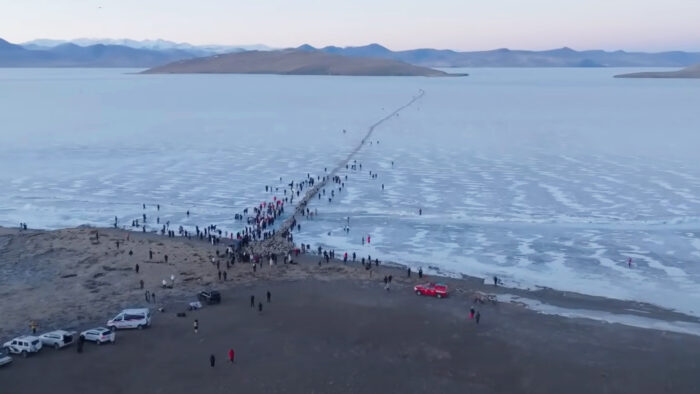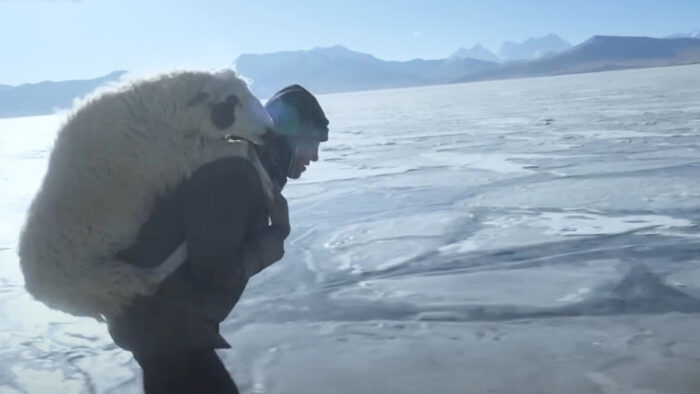This weekend’s film examines the sublime and simple beauty of Tibetan culture.

Photo: Screenshot
At 5,070m, Thoe Village is one of the highest permanent settlements in the world. The ethnic Tibetan population comprises 37 households and 150 people. Many of them make their living tending sheep.
Three seasons out of the year, the villagers herd their sheep back and forth across the windblown foothills. The drought-stricken mountainsides around Thoe provide sparse fodder for the animals. But in a land where no trees grow, and no crops sprout, it’s the only way to make a living.

Photo: Screenshot
To manage their herds, shepherds like Dainzin use traditional Nepalese herding techniques — flinging stones from slings and whistling commands. At 54, Dainzin is the oldest shepherd in a village where the average life expectancy is 45.
Much of the first half of Icy Journey follows Dainzin over the course of several months. Viewers watch him part from his wife Sonam for weeks, living on nothing but steamed bread, sleeping at night in a stone hut, and walking among his sheep. For Danzig, this daily existence gives him satisfaction — he’d like to continue it for as long as his body holds out — but it is also a necessity, the only way to feed his family.
And then winter arrives.
With it, plunging temperatures and fierce winds that eradicate any chance of feeding the herd.
Blue Jewel
But in one way, Thoe Village is lucky — or blessed, if you take the villager’s perspective. It’s nestled on a large lake called Puma Yumco, or Blue Jewel. Five kilometers into the lake, a tiny island nestles. The villagers call it the Island of God, as a Buddhist monastery was once located there.

Photo: Screenshot
And thanks to an accident of geography and local weather, the sheltered little spot grows enough grass to feed the village’s 2,000 head of sheep throughout the winter.
But how to get the sheep to the island? Dainzin and his fellow shepherds have to band together, combine their herds, and drive the sheep across slippery, wind-blown ice once the lake freezes over.
It’s this yearly adventure that takes up Icy Journey’s second half. Impatient viewers might be tempted to skip ahead to this section of the film, but that would be a loss. Because without the scene properly set — without a knowledge of what’s at stake if the shepherds fail to accomplish this task — the gripping scenes that follow lose their impact.

Photo: Screenshot
A dangerous journey
The journey is fraught with danger. The shepherds scout the route ahead of time, looking for the thickest patches of ice. Sheep have fallen through it before, endangering the entire herd. But safety isn’t guaranteed, even with preparation. Sheep skitter and slide on hooves not designed for traction on ice and threaten to scatter. To help, the shepherds scatter bag after bag of ash to provide a hoof-hold.

Photo: Screenshot
The wind blows incessantly. Sometimes, the animals just stop, unwilling to budge. It takes a lifetime’s worth of knowledge and a lot of teamwork to get them moving again. When some animals inevitably get injured, the shepherds pick them up and carry them on their backs toward the safety and food of dry land.

Photo: Screenshot
Eventually, shepherds and sheep all make it across. For a little while, the men can rest in a job well done, and the sheep can munch to their bovine hearts’ content. And then, next year, they’ll do it all again.

Photo: Screenshot
An Icy Journey from Tibet’s Sky Village is a measured window into the lives of people whose existence is very different from ours. For that reason alone, it’s worth a contemplative look.
We aren’t able to embed it, but you can watch it here.






